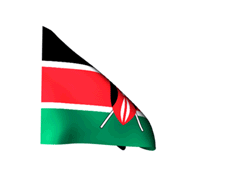Balancing Tradition and Modern Governance: The Oachira Temple Judgment
The Supreme Court of India, on December 3, 2024, delivered a significant judgment in the case Oachira Parabrahma Temple & Anr. Vs. G. Vijayanathakurup and Ors. (2024 INSC 922). This case revolved around the administration and management of the historic Oachira Parabrahma Temple, located in Kerala. The judgment provided clarity on issues of temple governance, elections, and the framing of a management scheme, balancing respect for traditional practices with the need for contemporary administrative oversight.
Background
The Oachira Parabrahma Temple is a unique and ancient institution in Kerala, distinguished by the absence of a consecrated idol or sanctum sanctorum. Its administration is governed by a three-tiered system of elected committees i.e., the General Board (Pothubharana Samithi), the Working Committee (Pravarthaka Samithi), and the Executive Committee (Karya Nirvahana Samithi). The Appellants, elected Secretary and President of the Executive Committee in 2017, approached the Supreme Court to challenge two orders of the Kerala High Court.
The litigation originated from a 2006 Civil Suit (OS No. 1/2006), filed by devotees seeking a court-framed scheme for temple administration. In 2010, the trial court passed a preliminary decree directing the framing of a scheme. This led to a protracted legal battle, culminating in the current appeal before the Supreme Court.
Key Issues Before the Court
The appeals addressed two primary issues:
1. Jurisdictional Overreach by the High Court: The Appellants contended that the High Court, after concluding proceedings in the Regular First Appeal (RFA No. 562/2010) through its judgment in 2020, had become functus officio[1] and lacked jurisdiction to entertain subsequent interlocutory applications, particularly I.A. No. 5/2022.
2. Removal of Elected Committees: The Appellants argued that the High Court’s order removing the elected Executive Committee and appointing an unelected five-member committee violated the temple’s established bye-laws and long-standing customs.
The Supreme Court’s Observations
Justice R. Mahadevan, delivering the judgment on behalf of a three-judge bench, extensively examined the disputes and the legal questions involved. The Court made the following observations:
1. Administration as Per Bye-laws: The Court noted that the temple’s administration was governed by its bye-laws, which stipulated a five-year term for the General Body and other elected committees. However, no elections had been conducted since 2017, leading to administrative stagnation.
2. Functioning of the Administrative Head: The Administrative Head, appointed by the High Court, faced criticism for allegedly failing to engage effectively with elected representatives and taking unilateral decisions, including appointing a Monitoring Committee to oversee temple-run institutions like the Parabrahma Super Speciality Hospital and Nursing College.
3. Importance of Fair Elections: Recognizing the unique historical and cultural significance of the Oachira Parabrahma Temple, the Court emphasized the imperative of transparent and fair elections to ensure the temple’s effective administration and development.
The Supreme Court’s Directions
To resolve the ongoing disputes and restore efficient governance, the Supreme Court issued the following key directives:
1. Appointment of a New Administrator: The Court appointed Justice K. Ramakrishnan, a retired judge of the Kerala High Court, as the new Administrative Head/Administrator to oversee temple affairs and conduct elections. His responsibilities include finalizing the voters’ list and completing the election process within four months.
2. Honorarium and Assistance: Justice Ramakrishnan will receive an honorarium of ₹2,00,000 per month, with additional allowances for travel and administrative expenses. He is authorized to appoint a retired District Judge and a legal professional for assistance, who will be paid ₹75,000 and ₹50,000 per month, respectively.
3. Continuity and Transition: The Court ordered that the current arrangements for temple administration continue until the election of new committees. All outgoing administrators, including the previous Administrative Head and Advocate Commissioner, were directed to hand over charge to the newly appointed Administrator.
4. Finalization of the Management Scheme: The trial court was directed to expedite the framing of the final management scheme for the temple. All parties were granted the liberty to present their claims and objections during these proceedings.
5. Election Oversight: The newly appointed Administrator was authorized to approach the trial court for guidance or clarification, ensuring the smooth conduct of elections and subsequent administration.
Conclusion
The Supreme Court’s judgment reinforces the importance of fairness and transparency in managing religious institutions. By addressing jurisdictional concerns, affirming the role of elected bodies, and ensuring robust oversight, the Court has sought to preserve the sanctity of the Oachira Parabrahma Temple while adapting to contemporary administrative needs.
This judgment not only underscores the judiciary’s role in resolving complex religious and administrative disputes but also sets a precedent for safeguarding the integrity and heritage of India’s temples in a rapidly modernizing society.
Shikha Pandey
Legal Associate
The Indian Lawyer
[1] The doctrine of functus officio (that is, having performed the office) holds that once an arbitrator renders a decision regarding the issues submitted, they lack any power to re-examine that decision.





































Leave a Reply